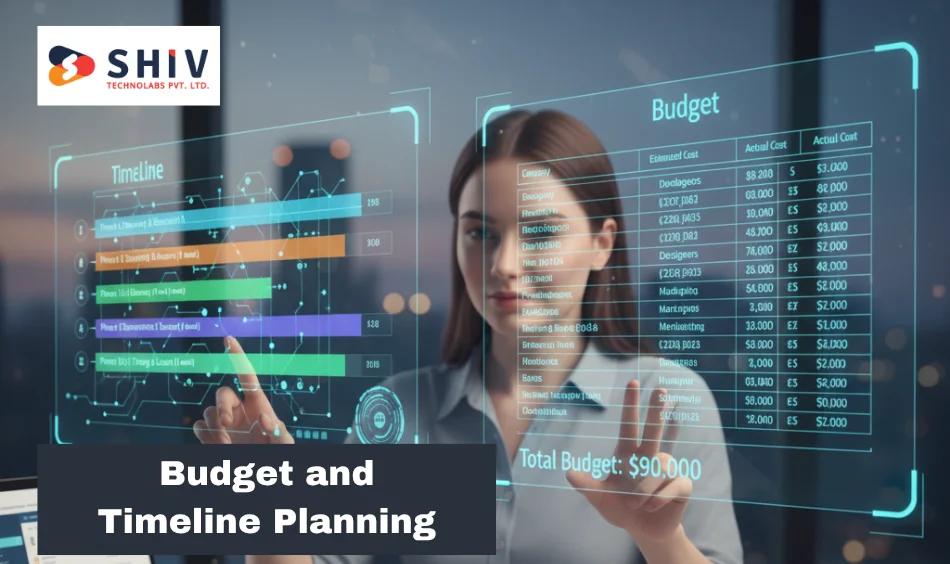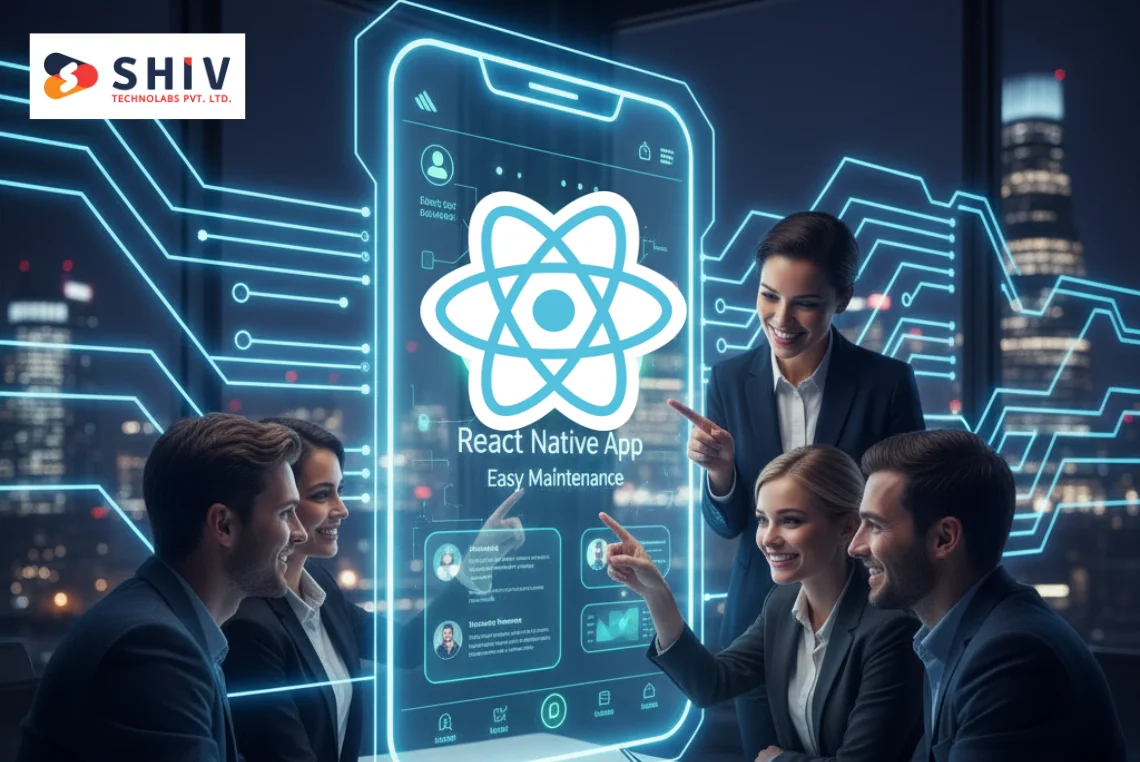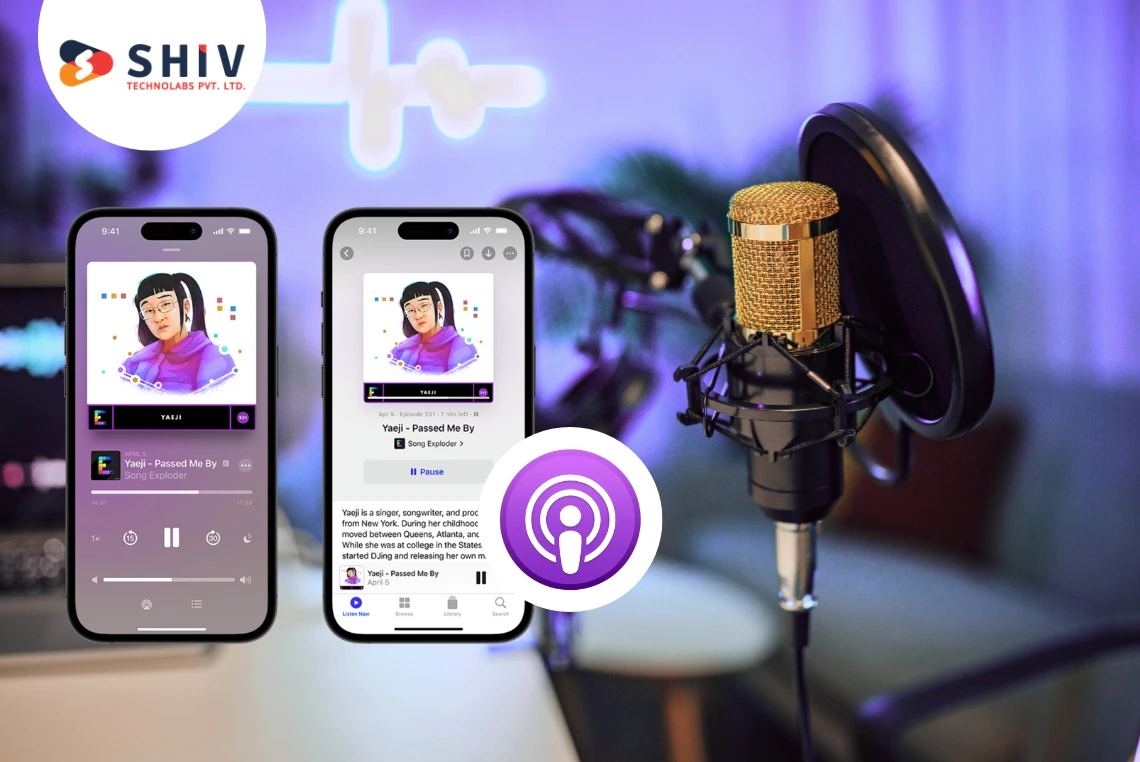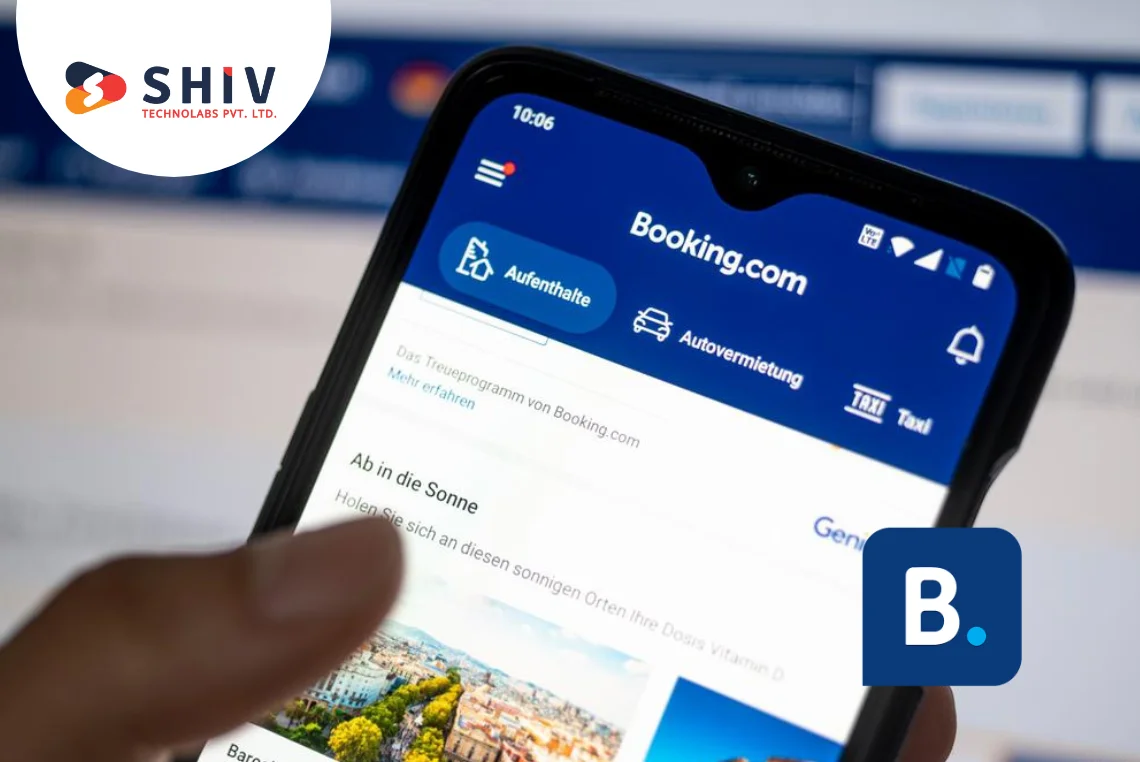Table of Contents
Every successful app began as a simple idea — something that solved a daily problem or made life easier. But having that spark isn’t the hard part. The challenge starts when you ask yourself, “I have an app idea — what do I do next?”
At this stage, excitement usually meets confusion. You might start sketching screens, thinking about names, or searching for a developer. But the truth is, rushing into development can waste both time and money. Many founders make this mistake — building first and validating later.
The smart way is to pause and plan. Your next few steps will decide whether your app becomes a success or just another abandoned project. You’ll need to confirm if people actually need it, protect your concept legally, and decide how to build it — all before writing a single line of code.
This guide breaks the entire process into simple, clear steps — from idea validation and legal protection to MVP development, budget planning, and launch preparation. Whether you want to build it yourself, hire developers, or work with an agency, you’ll know exactly where to start and what to expect.
If your app idea feels promising, this is where you begin turning it into a real product.
Step-by-Step Path to Bring Your App Idea to Life
Turning an app idea into a real product isn’t about jumping straight into development. It’s a journey of validation, planning, and testing. Each phase matters — from confirming demand to choosing the right tech and preparing for launch.
Below are the essential steps that help you move from concept to creation without wasting time or budget.
Step 1 — Validate Your App Idea
Before writing code or designing a logo, find out if your app solves a real problem. Many founders skip this step and end up building something nobody needs. Validation helps you confirm demand early and save money before development begins.
Start by talking to potential users. Ask what frustrates them about current solutions and what they wish existed. Honest feedback often reveals whether your idea fits a real gap. You can reach users through LinkedIn, Reddit, or online communities related to your app’s niche.
Next, study existing competitors. Search the App Store and Google Play for similar apps. Use tools like Sensor Tower, AppMagic, or SimilarWeb to check downloads, pricing models, and reviews. Note what users complain about — those gaps can become your opportunity.
Run a “Fake Door Test” to check interest before development. Create a simple landing page describing your app idea, add visuals or mockups, and include a “Join Waitlist” or “Notify Me” button. Track how many people click. This gives you data-driven validation.
You can also run online surveys using Google Forms or Typeform to collect responses about user pain points and willingness to pay. If more than 60% of people say they’d use your app, you’re moving in the right direction.
Step 2 — Protect Your Idea Before You Share It

So your app idea sounds exciting, and people seem to like it. But before you share it with a developer or post about it online, you need to add a small layer of protection. It’s not about being paranoid — it’s about being smart early on.
Here’s how to do it right:
- Sign an NDA (Non-Disclosure Agreement): When you discuss your concept with potential developers, designers, or investors, have them sign an NDA. It prevents your idea and documentation from being shared elsewhere.
- Secure your brand name: Even if your app isn’t live yet, you can still register a trademark for your name, logo, and tagline. It helps you claim ownership before anyone else does.
- Get your legal basics ready: If your app collects user data (like emails, photos, or payments), you’ll need:
- A Privacy Policy explaining what data you collect
- Terms of Use describing how people can use your app
- GDPR or HIPAA compliance if your app targets EU or healthcare users
- Keep a record of your work: Save every sketch, wireframe, or document in a dated folder (Google Drive or Notion works well). If disputes arise later, these timestamps can help prove you were the original creator.
Quick tip: Legal protection doesn’t have to slow you down — get templates, consult briefly with a lawyer, and move forward confidently.
Once your idea is secure, it’s time for the exciting part — choosing how you’ll actually build the mobile app and who’ll help you make it real.
Step 3 — Decide How You’ll Build It
This is the part where your idea starts turning into something real. You’ve validated it, protected it, and now it’s time to decide how to build it — and who will do it with you. There’s no one-size-fits-all approach here. Your budget, timeline, and technical comfort will shape your choice.
Let’s look at the main build paths most founders consider:
1. DIY or No-Code Tools
If you’re testing an idea or building a simple MVP, tools like Glide, Adalo, or Bubble let you create an app without touching code.
- Pros: Affordable, fast, great for prototypes
- Cons: Limited customization, harder to scale later
Best for: Founders validating an idea or building their first user-ready test version.
2. Freelancers
Hiring a freelance developer can be a good middle ground if you already know what you want.
- Pros: Cost-effective and flexible
- Cons: Quality and communication can vary; project management is on you
Best for: Small apps or short-term builds with a clear scope.
3. Development Agencies
An experienced agency gives you a full team — designers, developers, QA, and project managers.
- Pros: End-to-end development, professional delivery, and strategic input
- Cons: Costs more upfront, but often saves money long term
Best for: Founders who want reliability, scalability, and expert guidance from idea to launch.
4. Technical Co-founder or Dedicated Team
If your app idea is startup-level big, having a technical co-founder or hiring dedicated developers is ideal.
- Pros: Long-term commitment, shared vision, deep involvement
- Cons: Finding the right fit takes time
Best for: Startups aiming for funding or ongoing product evolution.
Decision tip:
Ask yourself three questions before choosing:
- How fast do I need to launch?
- What’s my available budget right now?
- Do I want a quick test product or a scalable foundation?
Once you’ve chosen your build path, you can start focusing on what goes inside your app — the MVP (Minimum Viable Product) features that prove whether your idea really works.
Step 4 — Build an MVP (Minimum Viable Product)
Here’s where your idea takes its first real shape. An MVP isn’t a half-built app — it’s a focused version that delivers your app’s core promise with only the must-have features. The goal isn’t perfection; it’s validation through real user feedback.
Think of it like this: you’re not baking the full cake yet — you’re serving a slice to see if people even like the flavor.
Why You Need an MVP
- Saves time and money: You avoid building features nobody wants.
- Gets real feedback early: Real users show what works and what doesn’t.
- Attracts investors faster: A working prototype is far more convincing than a slide deck.
- Sets your roadmap: Helps you prioritize future updates based on data, not assumptions.
How to Build a Solid MVP
- List core features only: Focus on what defines your app. If it’s a food delivery app, users just need to browse, order, and pay — not track calories or earn points (yet).
- Create wireframes: Sketch how your screens will look and connect. Use tools like Figma or Whimsical to visualize the flow.
- Build a clickable prototype: This doesn’t require coding. A clickable demo can show investors or testers how your app will feel.
- Develop the MVP: Once your prototype feels right, move to real development using the tech stack you selected. Stick to your must-haves — no feature creep.
- Test and collect feedback
- Use TestFlight (for iOS) or Google Play Internal Testing (for Android).
- Let small groups of users try it.
- Gather insights on usability, speed, and feature value.
Pro Tip:
Track engagement and retention from the start. Tools like Firebase Analytics or Mixpanel will show which features people use most — your signal for what to improve next.
Building an MVP is like a real-world experiment. It’s your best chance to test whether your app solves a meaningful problem before investing more time and money.
Once users start responding and data begins rolling in, the next challenge is managing your budget, timeline, and growth plan — that’s what Step 5 covers.
Step 5 — Budget and Timeline Planning

Building an app isn’t just about creativity — it’s a financial and time commitment. Knowing how much it costs and how long it takes saves you from surprises later. Many great ideas fail not because they were bad, but because the founders ran out of time or budget midway.
Here’s how to stay realistic from day one:
Understand the Cost Factors
Your app’s total cost depends on four main things:
- Features: More features mean more design, code, and testing time.
- Platform: iOS, Android, or both — dual platforms cost more.
- Design complexity: Custom animations or 3D visuals increase cost.
- Team type: Freelancers, agencies, or in-house teams charge very differently.
- Quick tip: Start small. Build only what’s essential to validate your MVP before scaling.
Estimated App Development Costs (2025)
| Type of App | Average Cost (USD) | Timeline |
|---|---|---|
| Basic MVP | $10,000 – $25,000 | 2–3 months |
| Mid-Level App | $25,000 – $60,000 | 3–6 months |
| Complex App | $60,000+ | 6–12 months |
These figures can vary by region and feature depth.
Hourly Developer Rates by Region
| Region | Average Hourly Rate | Ideal For |
|---|---|---|
| India | $20 – $40/hr | Cost-effective MVPs |
| Eastern Europe | $40 – $70/hr | Balance of quality and cost |
| USA & Canada | $80 – $150/hr | Enterprise-grade builds |
| Australia & UK | $70 – $130/hr | Local market-focused apps |
Smart move: You can hire a hybrid team — strategy from the US, development from India — to balance cost and quality.
Hidden Costs Founders Often Miss
Even after launch, some expenses keep recurring:
- App maintenance: $2,000–$5,000 per year
- Server and hosting: $20–$200/month
- Third-party APIs: Payment, maps, or analytics tools
- App store fees: $99/year for Apple, $25 one-time for Google
Keep at least 15–20% of your total budget aside for ongoing updates and bug fixes.
Timeline Breakdown
| Phase | Duration | Focus |
|---|---|---|
| Idea Validation | 2–3 weeks | Market and user research |
| Wireframing & Design | 3–5 weeks | Prototypes and UI screens |
| MVP Development | 8–12 weeks | Core feature coding |
| Testing & QA | 2–4 weeks | Fixes and improvements |
| Launch Prep | 1–2 weeks | App store setup, ASO, and marketing |
Pro tip: Use project management tools like Trello or Notion to track progress and deadlines.
Budget and timeline planning aren’t just spreadsheets — they’re your survival map. Once you have a realistic plan, the next step is to choose your tech stack wisely so your app remains scalable and easy to maintain.
Step 6 — Plan Your Tech Stack
Choosing your tech stack is like picking the foundation for your house. The wrong base can slow everything down, while the right one makes future updates smoother and faster. It’s not about chasing the trendiest tools — it’s about selecting what fits your app’s goal, budget, and growth plan.
Here’s how to make the right call:
1. Choose Your App Type First
Before you pick technologies, decide what kind of app you’re building:
- Native Apps: Built separately for iOS (Swift) and Android (Kotlin). Best for performance-heavy apps like gaming or AR.
- Cross-Platform Apps: Use a single codebase for both systems. Flutter and React Native are popular choices here.
- Progressive Web Apps (PWAs): Run through browsers but behave like native apps. Ideal for low-cost MVPs or internal tools.
Pro tip: Most startups start with cross-platform frameworks — faster development and reduced cost by almost 40%.
2. Pick Your Frontend Framework
This is the layer users see and interact with:
- Flutter: Fast, beautiful UI, great community support
- React Native: Backed by Meta, excellent for MVPs and long-term projects
- Swift or Kotlin: Ideal for apps needing top-tier speed and device integration
Smart move: If your app needs high animations or a native feel, go with Flutter. For flexibility and a wide talent pool, React Native works well.
3. Decide Your Backend Technology
The backend keeps your app running — storing data, managing users, and processing logic.
- Firebase (Google): Best for MVPs; quick setup, includes authentication and analytics
- Supabase: Open-source Firebase alternative with full database control
- AWS Amplify: Great for scaling apps with dynamic traffic
- Node.js or Django: For full custom backends with advanced business logic
Pro tip: Start with Firebase for MVP; move to AWS or a custom backend as you scale.
4. Set Up Analytics and Testing
To make smart product decisions, you need numbers — not guesses.
- Firebase Analytics → user behavior & retention tracking
- Mixpanel → feature usage and conversion funnels
- TestFlight / Google Play Internal Testing → beta testing before launch
- Crashlytics → tracks app crashes and stability issues
Remember: Analytics is your silent co-founder — it tells you what users actually do, not what they say they do.
5. Keep Scalability in Mind
Even if you’re launching an MVP, think ahead:
- Use modular architecture so new features don’t break old ones.
- Store all assets in cloud storage (AWS S3, Google Cloud).
- Keep APIs and databases structured for multi-user growth.
Goal: Build something light today but strong enough to grow tomorrow.
Once your stack is set, you’re ready to bring your app to the audience — the exciting part where you finally launch, promote, and grow your first users.
Step 7 — Launch and Grow
You’ve built, tested, and refined your MVP — now it’s showtime. But a successful launch isn’t about hitting “Publish” on the App Store. It’s about building anticipation, attracting early users, and keeping them coming back.
Let’s break this down into clear, actionable moves:
1. Prepare for Launch
Before you go live, double-check these essentials:
- App Store Optimization (ASO): Write a short, keyword-rich title and description. Add 5–7 screenshots showing the app’s core value.
- App Icon: Keep it simple, recognizable, and visible on both dark and light backgrounds.
- Beta Test Feedback: Fix any last-minute bugs and polish the UX. Use TestFlight (iOS) or Play Console internal testing (Android) for smooth rollout.
- Landing Page: Create a single-page website with app details, screenshots, and links to download.
Pro tip: Offer early access or referral rewards to users who sign up before the public launch.
2. Build Prelaunch Buzz
Don’t wait until launch day to start marketing — the best apps start building community weeks in advance.
Try these low-cost tactics:
- Create a waitlist: Use tools like Mailchimp or Tally Forms to collect interested users.
- Share behind-the-scenes updates: Post design snippets or feature teasers on LinkedIn or Reddit.
- Post on Product Hunt: Great for visibility and early feedback.
- Reach small niche communities: Forums, Discord groups, and Facebook groups related to your problem space often bring your first 100 true fans.
3. Acquire Your First 1000 Users
Getting the first few users is harder than getting the next 10,000. Start with the people who understand your product best.
- Ask early testers to invite friends.
- Offer referral bonuses or in-app credits.
- Share authentic stories — why you built this, who it helps, and how.
- Collaborate with small influencers or micro-communities related to your niche.
Tip: Focus more on retention than raw downloads. 100 loyal users who love your app are better than 1000 who uninstall after a day.
4. Keep Improving Post-Launch
Your first release isn’t the finish line — it’s the starting data point.
- Track analytics: Monitor user activity using Firebase or Mixpanel.
- Watch churn: Identify when users stop using the app and fix those friction points.
- Collect reviews: Encourage happy users to rate you. Respond quickly to feedback.
- Plan small updates: Add one improvement every few weeks based on what users actually request.
Pro tip: Build growth loops — features that naturally bring new users. Example: sharing achievements, inviting friends, or social integrations.
5. Monitor and Scale
As you grow, you’ll need stronger systems for performance, analytics, and user support.
- Use Crashlytics to monitor stability.
- Move to scalable cloud hosting (AWS, GCP, or Azure).
- Add push notifications and email flows for engagement.
- Start small paid campaigns once you find what converts organically.
Launching your app is only the start of its story. Growth comes from consistent updates, listening to users, and improving bit by bit. Even small wins — one new feature, one great review, one partnership — push your app closer to real success.
Extra Questions You’ll Likely Have (Quick Answers You Can Trust)
Every new founder hits the same doubts at some point — “Is my idea original?”, “How much will this cost?”, “Can AI really build my app?”
Here are short, straight answers to the most common questions you’ll face while turning your idea into a product.
Q1. How do I know if my app idea already exists?
Search the App Store, Google Play, and startup directories like Crunchbase or Product Hunt.
If you find similar apps, don’t panic — that’s usually a good sign. It means there’s proven demand.
Your job: identify what those apps miss and do it better or simpler.
Q2. Can I protect my app idea with an NDA?
Yes, an NDA (Non-Disclosure Agreement) is the first step to protect your concept before you discuss it with developers or investors.
It prevents others from sharing your documentation, designs, or prototypes without your consent.
For extra safety, keep all your creative work dated and stored in a private drive.
Q3. How much does it cost to build an MVP app in 2025?
Expect around $10,000–$25,000 for a basic MVP with essential features.
If you go with a cross-platform framework like Flutter or React Native, you’ll save about 30–40% compared to separate iOS and Android builds.
Cost also depends on design quality, backend needs, and who’s building it (freelancer vs agency).
Q4. Which is better for a first app — iOS or Android?
It depends on your target users:
- iOS first: Great for North America, Europe, and premium audiences.
- Android first: Better for Asia, Africa, and regions with diverse devices.
If you’re unsure, go cross-platform — you’ll reach both with one codebase.
Q5. How long does it take to build a basic app?
Usually 3 to 6 months — including design, development, and testing.
Smaller MVPs can be ready in 8–12 weeks, while larger, feature-heavy apps take longer.
Building with a focused team and a clear roadmap always shortens the timeline.
Q6. Can AI really help me build my app?
Absolutely — but it won’t replace developers yet.
AI tools can speed up many steps, like:
- Prototyping: Tools like Uizard and Figma AI create quick design layouts.
- Code generation: Builder.ai or ChatGPT can generate snippets and logic samples.
- Testing: AI-based QA tools can find bugs early and improve performance.
AI saves time, but human insight still drives great apps.
Q7. What’s the cheapest way to test my app idea?
Start without coding.
- Make a simple landing page with your idea.
- Run a small ad campaign or share in communities.
- Track how many users sign up or show interest.
If people click before your app even exists — you’re on the right path.
Q8. How do I get my first 100 users?
- Reach out directly — personal messages, niche forums, LinkedIn groups, or beta-testing communities like Betalist.
- Give them a small reason to try: early access, a reward, or recognition as founding users.
- Treat those first 100 users like your advisors — their feedback will shape your next release.
Your journey doesn’t end with answers — it begins with decisions.
And that’s where having a reliable partner helps you avoid rookie mistakes and move faster toward launch.
When You’re Ready to Build — Partner with the Right Experts

Having an app idea is exciting. But turning that idea into a working product — one that users love and investors notice — takes more than just coding. It needs structure, feedback, and the right team that understands both business and technology.
That’s where Shiv Technolabs steps in.
We’ve helped startups and growing companies transform early-stage ideas into fully functional, revenue-ready mobile apps. Whether you’re planning your first MVP or preparing for a large-scale rollout, our process keeps your goals clear and your build cycle transparent.
Here’s how we usually help founders like you:
- Validation Support: We review your idea, market positioning, and feature scope to identify what’s worth building first.
- MVP Design & Development: Our design and engineering teams build a user-first MVP that’s easy to test and scale.
- Cross-Platform Expertise: From Flutter to React Native, we build once and help you launch on both iOS and Android.
- Post-Launch Assistance: Regular maintenance, feature updates, and user growth support once your app is live.
💡 We treat your idea like our own — guiding it from “concept” to “downloaded.”
If you’re serious about taking your app idea beyond the sketchbook, connect with Shiv Technolabs and start shaping what your future users will love.
Conclusion
Instagram began as a photo filter tool. Airbnb started as a way to rent out an air mattress. Even WhatsApp was born from a need to get simple “status” updates from friends.
Every one of these apps started exactly where you are right now — with a single thought: “This could be something.”
The difference between an idea and an app people love isn’t luck — it’s action. You’ve already taken the first step by researching what to do next. The next steps are clear: validate, protect, build, test, and launch. Don’t worry about doing everything perfectly. Worry about doing it deliberately.
Even a small MVP, shared with real users, teaches more than months of overthinking. And once feedback starts rolling in, you’ll know exactly what to build next — and who to build it with.
Your idea deserves that chance. Start with what you have, get expert help when you need it, and keep improving. The apps changing lives today were once just notes on someone’s phone — just like yours.





















